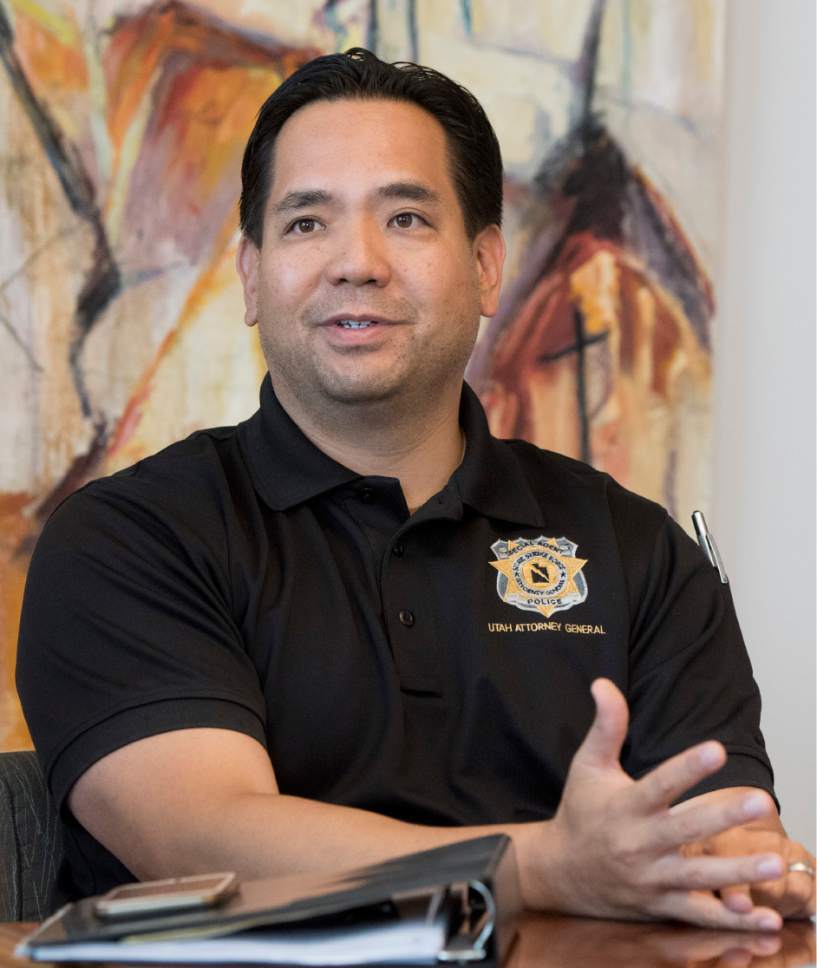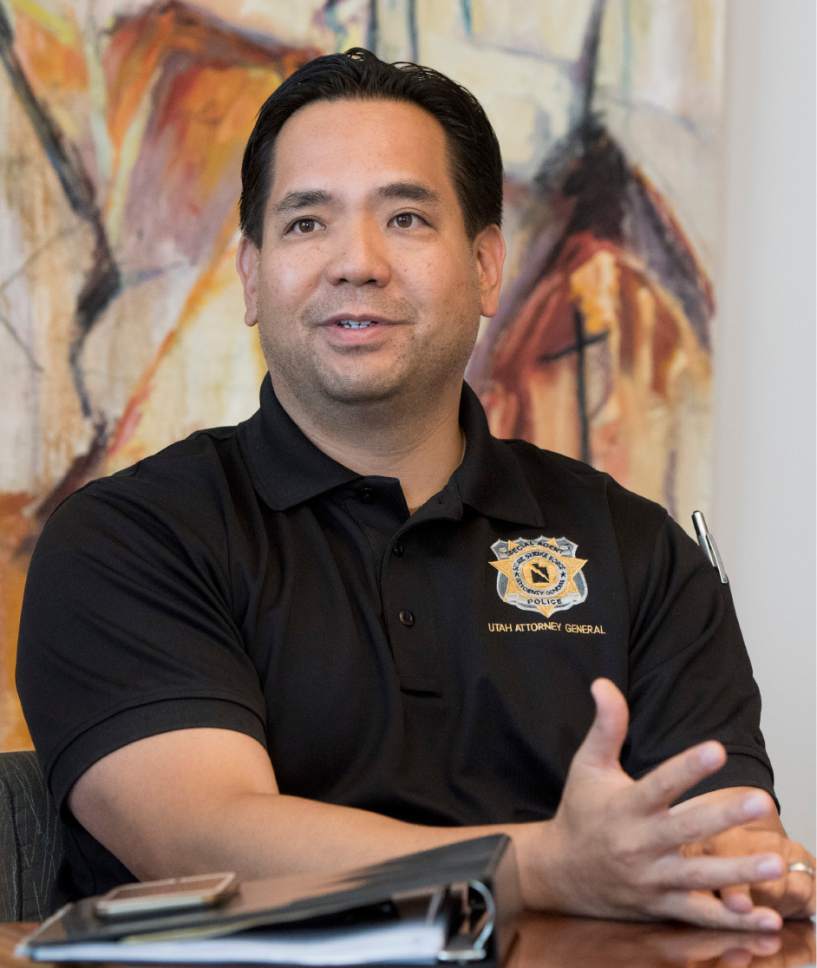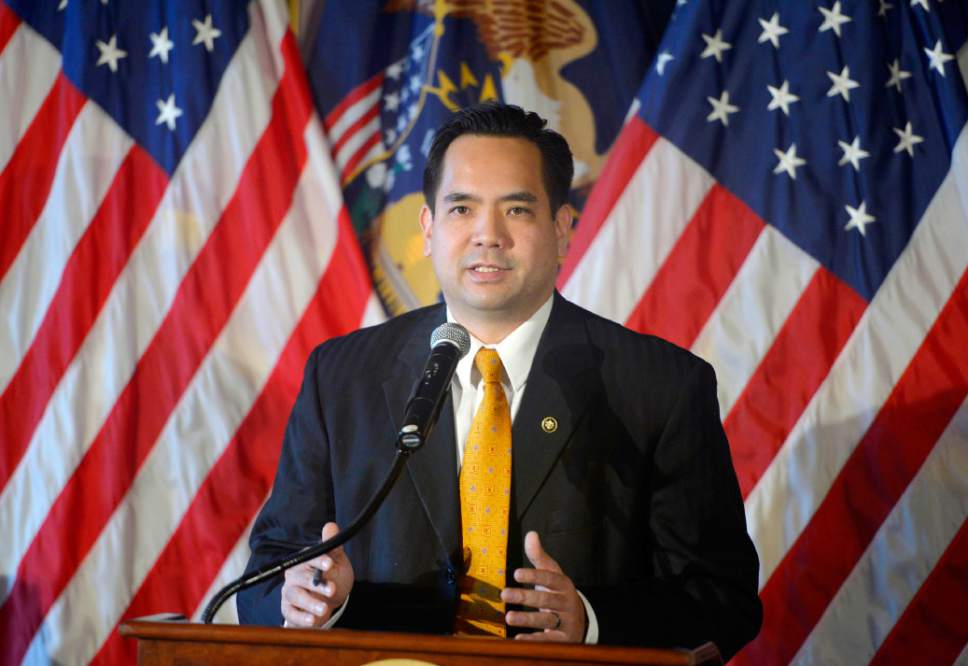This is an archived article that was published on sltrib.com in 2016, and information in the article may be outdated. It is provided only for personal research purposes and may not be reprinted.
Utah Attorney General Sean Reyes has made his war against the exploitation of children a centerpiece of his political profile, but his zeal to be at a child-pornography bust may have tainted that investigation and helped the suspect go free.
The problem began when Reyes was seen taking pictures of the crime scene with his cellphone, although the attorney general insisted he had no photographs from inside the home, only outside. Still, investigators at the scene reported that they saw him snapping photos in the basement.
That concerned prosecutors in the attorney general's office enough that they declined to go forward with the case. They feared defense lawyers could argue at trial they didn't get all the discoverable evidence.
The incident occurred after the multiagency Internet Crimes Against Children (ICAC) Task Force started investigating a West Valley City man suspected of downloading material from child-porn sites in September 2014.
The West Valley City police report, obtained by The Salt Lake Tribune through the Government Records Access and Management Act, was written by then-Sgt. Blair Barfuss, a member of ICAC, and noted the frustration of the task force when the case was tossed out.
During the sting, Reyes entered the home with the ICAC team. Rep. Jason Chaffetz also was on hand but stayed outside.
While investigators gathered evidence and interviewed the suspect and his wife, Barfuss reported, the attorney general appeared to be taking pictures of the scene with his cellphone.
Afterward, Barfuss was poised to proceed on 10 felony counts of sexual exploitation of a child. He took the case for screening to prosecutors in the attorney general's office in late January 2015.
"While reviewing all case details, I was asked [by one of the prosecutors] if all reports and evidence were provided for discovery," Barfuss wrote. "I advised [the prosecutors] that while on scene … I observed Attorney General Sean Reyes taking pictures with a cellular phone in the basement of the residence. This observation caused concern with [the prosecutors] who asked why [Reyes] would take pictures at a search-warrant scene."
Barfuss wrote that, in March 2015, he received a call from Jessica Farnsworth, leader of the ICAC team, who wanted more clarification about Reyes taking photographs in the basement. She told Barfuss that Reyes maintained he took pictures only outside the house. Reyes said it may have looked like he was taking photos in the basement because his phone had a cracked screen, and he had to hold it at eye level to read messages.
Barfuss reported that he was "90 percent sure" he saw Reyes taking pictures in the basement.
Then-Assistant Attorney General Kristine Knowlton, head of the ICAC prosecution team, eventually opted against pressing charges because of questions about Reyes' cellphone use in the house.
Knowlton said her refusal to prosecute the case caused friction with top brass in the attorney general's office, who felt her decision reflected badly on her boss.
In late June 2015, Knowlton was invited to lunch at the New Yorker by her supervisor, who told her she was being moved from ICAC to the welfare-fraud division.
"He offered to buy me a glass of wine, which I thought odd because it was during business hours," Knowlton said in an interview. "I wondered if I was being set up. Then, at the end of the discussion, he said, 'Can we have a professional hug?' That was weird. I looked at him and said no."
Rather than accept the transfer, Knowlton, a 20-year veteran of the attorney general's office, retired.
West Valley City Police Chief Lee Russo said Reyes and Chaffetz may have tagged along on the sting because "a mobile crime lab was used." The lab was partly funded through government grants, explained Russo, who added that officials may have wanted to monitor its effectiveness.
The chief pointed to other potential pitfalls with the abandoned case. For starters, officers did not tape an interview of the suspect inside the lab and the man never admitted guilt, stating that any child porn on his computer was the result of a virus.
But prosecutors were particularly pained by the prospect that Reyes had entered the home and officers had reported he was taking pictures.
Leo Lucey, chief of the attorney general's investigations division, said it is not unusual for officials such as the attorney general to go on ride-alongs to observe operations. Reyes and other officials are welcome to do so, he said, noting that a Homeland Security official also was at the West Valley City search.
As far as the pictures on Reyes' cellphone, Lucey said he asked his boss if he had taken photos inside the home, and he told him no. He said Reyes offered to let him take his phone, but Lucey declined.
Lucey said he did not know why Knowlton was to be transferred, but "it is not my understanding" that it was because she declined to prosecute that case.
The attorney general's spokesman disputes the idea that Knowlton's decision was forced.
"At no time did any supervisor direct Kris Knowlton to decline the case," according to an email Daniel Burton sent to The Tribune late Thursday, "nor was the case declined because of or at the request of the A.G."
Reyes has touted his fight against sexual exploitation, giving interviews about his role in an undercover operation targeting a sex-slave ring in Colombia.
That sting took place a month before the Republican attorney general thrust himself into the West Valley City search. But the ICAC team apparently wanted to have Reyes nowhere near a later sting.
On March 31, Barfuss and ICAC members were preparing to serve a warrant in another child-porn probe when they got a call saying that the attorney general and "other dignitaries" were on their way.
One ICAC member, whose name was redacted in the report, said Reyes should not be allowed in the house.









